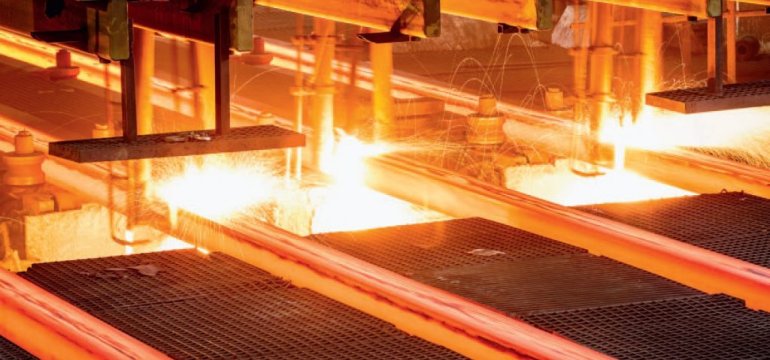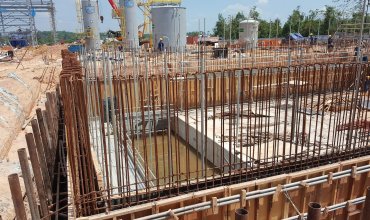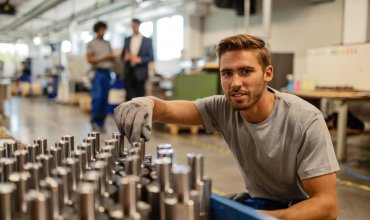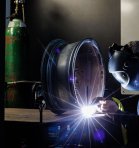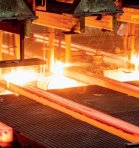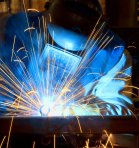Steel, a strong and versatile material, is the foundation of modern metallurgy and industry. Countless applications, from hand tools to engineering structures, depend on its structure and properties. However, the ability to modify and control the properties of steel is crucial to many manufacturing processes. Therefore, knowing how to unharden steel becomes indispensable. Unhardening, the reverse process of hardening, aims to reduce the hardness of steel, restoring its ductility and fracture toughness. In this article we will go through step by step how to unharden steel, learn why it is necessary and what techniques are used in the process.
What is steel unhardening?
Unhardening steel, also known as tempering, involves reducing the hardness of a material that has previously been hardened. Hardening is used to increase the hardness and strength of the material; however, the process can make the steel brittle and prone to cracking. Unquenching, on the other hand, reverses some of the effects of quenching, making the steel more flexible and resistant to cracking. The process is essential for some steel applications, such as tool making or structural components.
The steel is heated in a controlled manner and gradually cooled to achieve the desired properties. The time and temperature depend on the chemical composition of the steel and the end use of the material. The process can be carried out in a variety of ways, including in industrial furnaces, using gas burners or by electromagnetic induction.
Why is the hardening of steel essential?
To ensure mechanical strength
The main purpose of unhardening steel is to improve its mechanical strength. After hardening, steel becomes very hard, but also brittle, which can result in cracks and damage over time. Unhardening allows for a material that is both hard and flexible. This means that the steel will not only withstand greater loads, but will also better withstand operating conditions.
Reduction of internal stresses
Hardening introduces significant internal stresses into steel, which can lead to deformation or even cracking during use. Unquenching acts as a kind of "peace of mind" for the material, reducing these stresses and ensuring structural stability. This is crucial for machine parts, where precision and stability are essential.
Improving microscopic structure
Another important aspect is the correction of the microscopic structure of the steel. The hardening process, although it adds hardness, can lead to the formation of undesirable phases such as martensite, which is very brittle. Unquenching transforms martensite into bainite or ferrite, which are more stable and resistant to fracture. This gives the steel an optimal combination of hardness and elasticity.
Increased corrosion resistance
During quenching, steel can react with oxygen, leading to surface oxidation. Unquenching reduces the risk of corrosion by stabilizing the material's structure. As a result, the steel retains its aesthetic and functional properties for a longer period of time, which is especially important for components exposed to the elements.
Enabling further processing
Often, steel after hardening is too hard to undergo further processing, such as milling, turning or drilling. Unhardening allows these processes to be carried out safely and efficiently, with less risk of damage to tools or the material itself.
Techniques for unhardening steel
Furnace tempering
Furnace tempering is one of the most common techniques for unhardening steel. This process involves placing the steel in a furnace and gradually heating it to the required temperature, which depends on the chemical composition of the steel and the desired final properties. This temperature typically ranges from 150°C to 700°C, although it can be higher for some specialized steels.
Once the desired temperature is reached, the steel is kept in the furnace for a specified period of time, usually from tens of minutes to several hours. This time allows the material's structure to fully stabilize and reduce internal stresses. Once the heating process is complete, the steel is gradually cooled, which is a key step, since cooling too quickly can lead to the reintroduction of stresses.
Use of gas burners
Gas burners offer a quick and effective way to de-stress small or medium-sized steel parts, especially in a shop setting. This process involves locally heating steel to the appropriate temperature using propane-butane or acetylene burners.
The main advantages of using gas burners are precise control over the process and the ability to reheat selected sections of material without heating the entire object. The disadvantage of this method can be the difficulty of maintaining a stable and even temperature across the entire surface of the material, which can result in non-uniform de-lamination.
For optimal results, it is advisable to use gas shielding, such as argon or nitrogen, which minimizes the risk of oxidation and contamination of the steel surface during the heating process.
Tempering using induction
Electromagnetic induction is an innovative technology that allows for fast and precise hardening of steel. The process uses eddy currents generated by an electromagnetic field to heat the steel to the required temperature. Once the desired temperature is reached, the material is gradually cooled, similar to other methods of unquenching.
This technology offers numerous advantages, including faster heating, greater precision and lower energy consumption. In addition, due to its precision, this method is often used for the decomposition of specific sections or steel components where high thermal accuracy is required.
Salt bath method
Salt bath is a method that involves immersing steel in a high-temperature salt solution, usually consisting of sodium nitrate (NaNO3) and potassium nitrate (KNO3). This solution is heated to a temperature in the range of 150°C to 700°C, depending on the requirements of the material.
The advantage of this method is that the steel components are heated evenly and quickly, allowing for uniform thawing conditions. The disadvantages can be the need for specialized equipment and the risk of corrosion if the process is not carried out under proper conditions.
Annealing in a chamber furnace
Chamber furnaces, popular in large industrial plants, offer the possibility of annealing large batches of steel simultaneously. The process involves placing materials in a furnace chamber, which is sealed and heated to the required temperature.
The main advantages of this method are the ability to control the atmosphere inside the chamber (for example, by introducing an inert gas), energy efficiency and the ability to process large quantities of material simultaneously. The chamber furnace also allows precise control of both the temperature and duration of the process, which guarantees high quality and repeatable results.
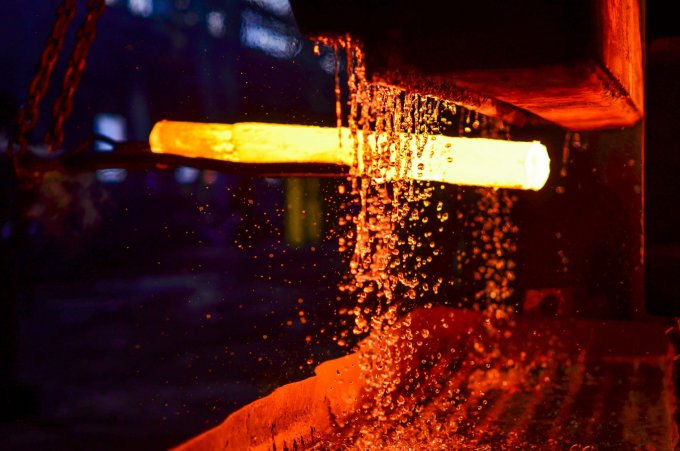
How to prepare steel for quenching?
Selecting the right material
Preparing steel for the hardening process requires a full understanding of the material properties. Different grades of steel require a variety of approaches. The right choice must be made based on the chemical composition and previous processing. Common grades used are carbon, chromium-nickel, or tool steels, which have different properties and temperature requirements.
The material's label or certificate should include information on the chemical composition, allowing for proper setting of quenching parameters. Avoiding materials with unknown chemical compositions is crucial for predictable results.
Cleaning and degreasing the surface
Thorough cleaning and degreasing of the steel surface is essential before carrying out the unquenching process. Residual oil, grease, rust or other contaminants can affect the quality of the demolding and lead to inhomogeneous final properties.
Various methods can be used for cleaning, such as chemical baths, sandblasting or ultrasound. Degreasing, on the other hand, is most often carried out with organic solvents, such as acetone, or with specialized industrial washers.
Dimensional and geometric control
During the heat processes of steel components, dimensional changes occur. Before quenching, therefore, it is worthwhile to accurately measure all key dimensions in order to control them and compensate for any post-process changes. For precision components such as machine parts or tools, dimensional accuracy is crucial.
Equipping the workshop with the right measuring tools, such as micrometers, calipers or dial gauges, makes it possible to accurately determine dimensions before and after the hardening process.
Preparation of the environment
To ensure that the de-hardening process goes according to plan, it is also important to ensure that the work environment is properly prepared. Make sure all tools and equipment are fully operational and calibrated. It is also worth paying attention to proper ventilation of the workspace, especially if you are using gas burners or working with chemicals.
Safety inspection is also a key aspect. All thermal processes involve the risk of accidents, so it is essential to use appropriate personal protective equipment, such as gloves, safety glasses and flame-resistant clothing.
Establishing process parameters
Finally, before starting the quenching process, it is important to establish all process parameters based on the grade of steel and its intended use. For example, for carbon steel, the quenching process may require temperatures in the 150°C to 250°C range, while tool steels may require higher temperatures.
It can be invaluable to consult metallurgical manuals, temperature tables for different grades of steel and specialists working in the field.
Potential mistakes and how to avoid them?
Inadequate surface cleaning
One of the most common mistakes is insufficient cleaning of the surface before the start of the hardening process. Impurities can affect uneven heating and introduce defects into the structure of the material. To avoid this, always make sure the surface of the steel is free of oil, grease or rust. Regular use of cleaning chemicals and controlling the degreasing process are key.
Cooling down too quickly
Another common mistake is to cool down too quickly after the heating process is complete. Rapid cooling can lead to re-hardening of parts of the steel, nullifying the end result. To avoid this problem, cool the steel slowly and in a controlled manner. This can be done, for example, by gradually lowering the temperature of the furnace or using a temperature-controlled water bath.
Inadequate temperature control
Even and precise heating is crucial for optimal results. Inadequate temperature control can lead to local overheating or incomplete quenching. Using modern thermocouples and temperature control systems can reduce the risk of errors. Regular calibration of measuring equipment also has its role in ensuring high process quality.
Ignoring material specifications
Each type of steel has its own unique requirements and specifications for temperatures and duration of the quenching process. Ignoring these specifications can lead to a material with improper mechanical properties. Always check the material's certifications and technical documentation before starting the process, and consult professional literature and metallurgical experts.
Inappropriate tools and equipment
Using the wrong tools and equipment is another potential problem. Furnaces, burners or even salt baths must be properly adapted to the type and size of material being processed. Even the smallest measuring tool, such as an improperly calibrated thermometer, can introduce significant errors into the process. Regular maintenance and calibration of equipment are extremely important.
Lack of adequate ventilation and safety measures
Ensuring adequate ventilation and the use of personal protective equipment are also aspects that, if neglected, can lead to serious problems. Metallurgical thermal processes involve the generation of harmful gases and dust. The use of protective masks, flame-resistant clothing and an adequate ventilation system is not only recommended, but necessary.
Tips from the experts
Dr. Jan Kowalski, metallurgical specialist
"The process of tempering steel is extremely demanding and precise. It is important to remember that any change in the process parameters, even the smallest one, can have a significant impact on the final properties of the steel. That's why I recommend that you always work according to material specifications and consult with professionals on every step."
Monika Nowak, materials engineer
"Do not underestimate the importance of proper preparation of the surface for thinning. Even the slightest contamination can affect the quality of the final product. Also, even heating is crucial, so investing in a good quality furnace or burner is a must."
Andrzej Wisniewski, industrial technologist
"Avoiding mistakes is half the battle. In my practice, the most common causes of problems are cooling too fast and insufficient temperature control. The use of modern measuring equipment and process control systems is invaluable. Never skimp on the quality of equipment."
Summary
Steel is a fundamental material in metallurgy and industry, valued for its strength and versatility. The process of unhardening, or reducing the hardness of steel, is necessary to restore its ductility and fracture toughness. This makes the steel more flexible and resistant to fracture, which is crucial in the manufacture of tools and structural components. Unquenching reduces internal stresses, improves microscopic structure, increases corrosion resistance and allows further processing of the material. The process can be carried out by various methods, including furnaces, gas torches, electromagnetic induction or salt baths. It is important to properly prepare the steel, including surface cleaning and dimensional control, to achieve optimal results and avoid potential errors.


